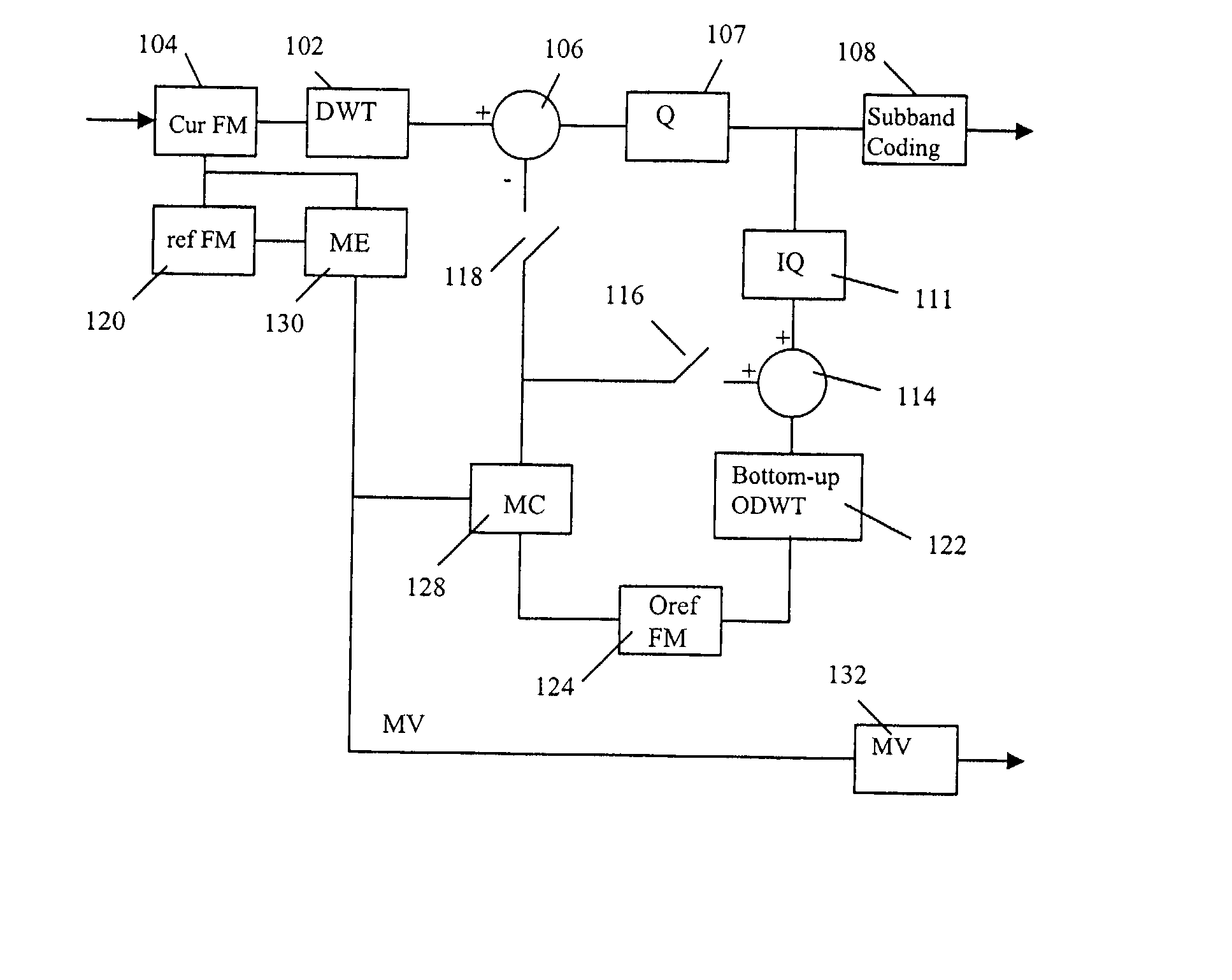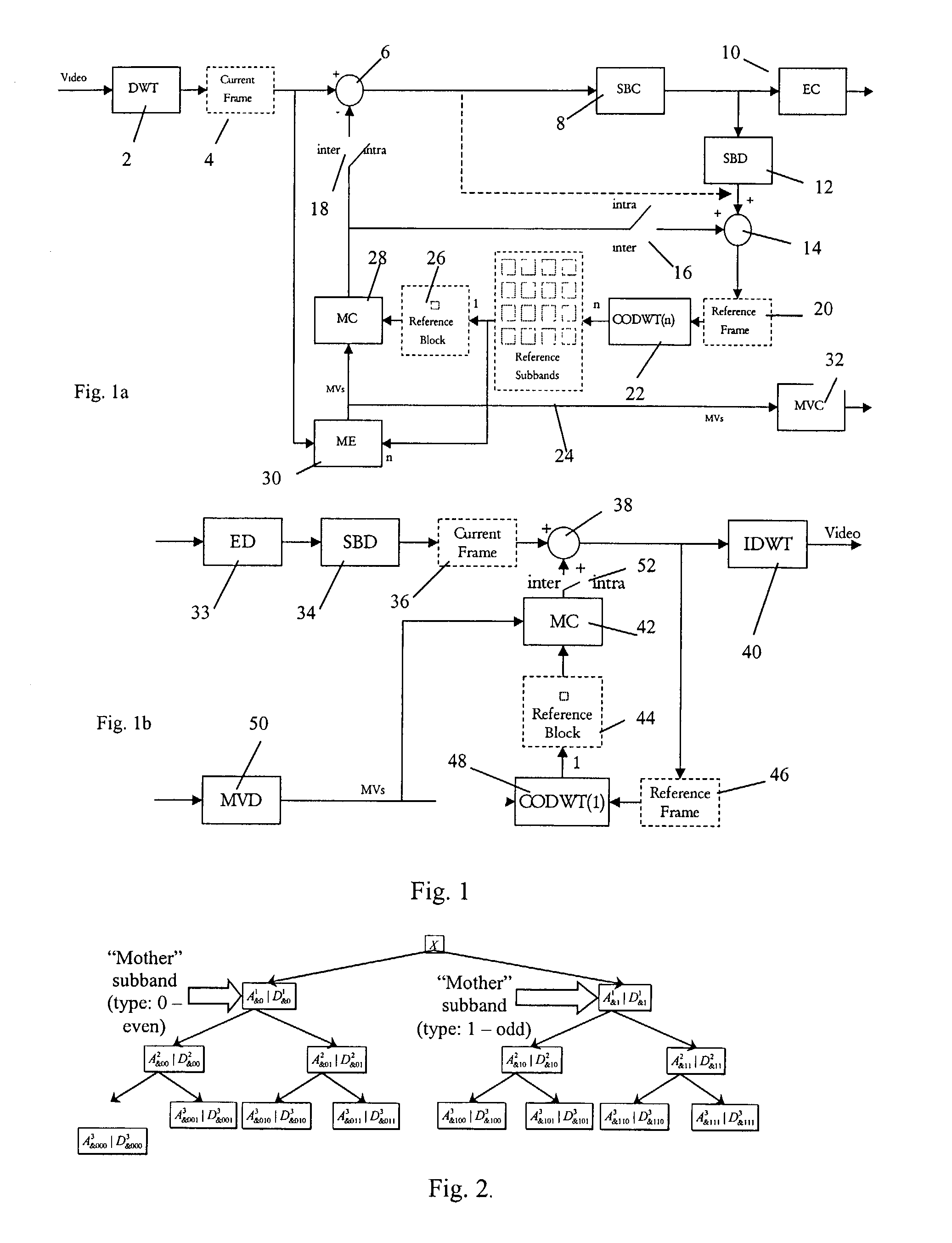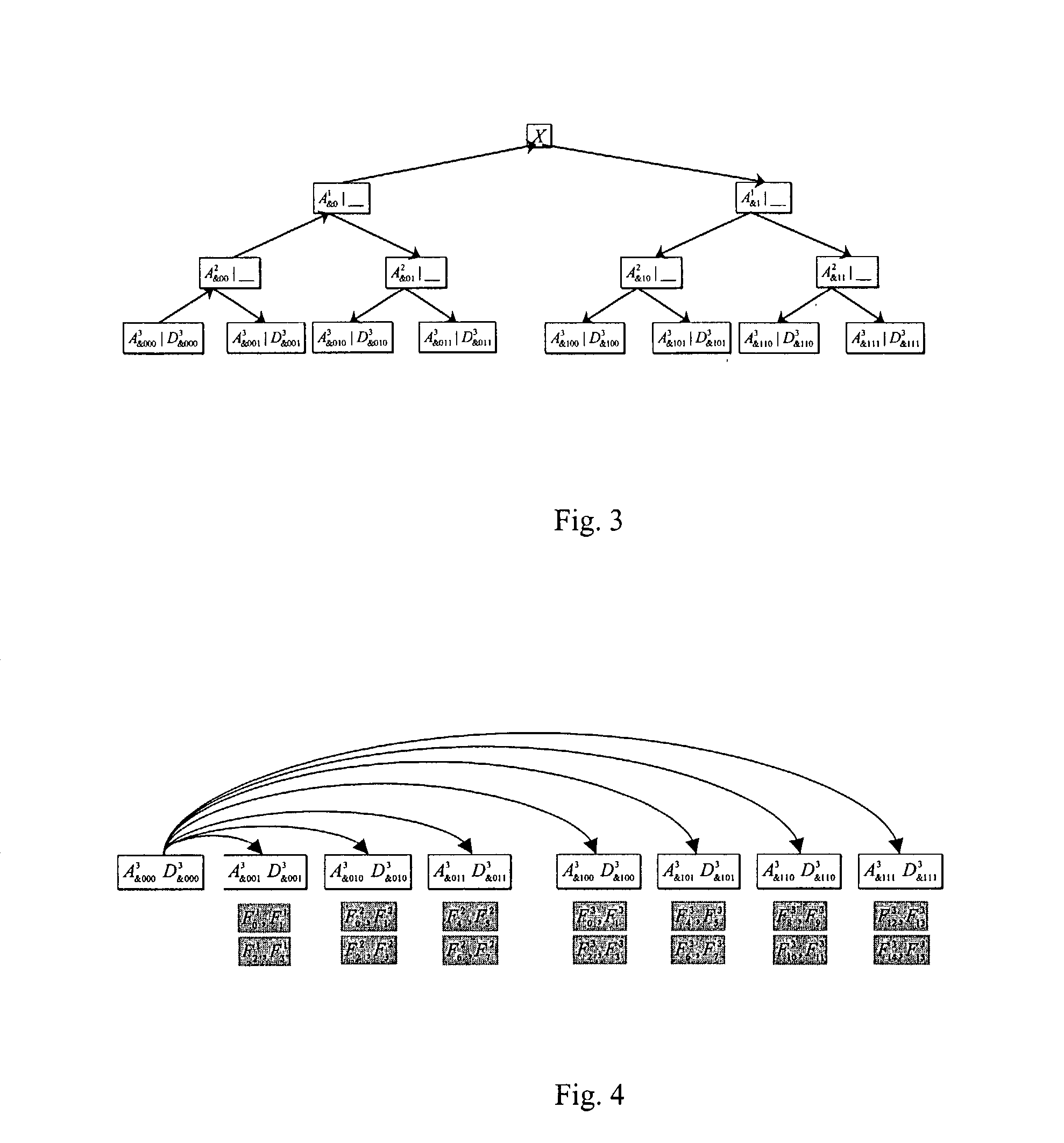Method and apparatus for subband encoding and decoding
a subband encoding and decoding technology, applied in the direction of color television with bandwidth reduction, signal generator with optical-mechanical scanning, signal system, etc., can solve the problems of insufficient bi-directional communication and applications, insufficient complete codec delay, and relatively complex implementation of decoders
- Summary
- Abstract
- Description
- Claims
- Application Information
AI Technical Summary
Problems solved by technology
Method used
Image
Examples
first embodiment
[0066] A potential architecture of a wavelet-based video codec performing in-band motion estimation / motion compensation (ME / MC) with which the invention may be used is given in FIG. 1 whereby FIG. 1a shows the encoder and FIG. 1b the decoder. This architecture can be seen as an extension of the "classical" architecture of transform-based video coders / decoders. In this scheme there are two modes of operation as determined by the setting of the switches 16, 18, as explained in the following. In the intra-frame coding mode, the current input frame 4 is first of all wavelet transformed using a suitable compression technique such as the DWT module 2 of FIG. 1, the resulting wavelet subbands are quantized and encoded using an embedded intra-band coding technique, (SBC module 8) and the result is entropy-coded using the EC module 10. The embedded intra-band coding and the entropy coding are performed in a level-by-level fashion to guarantee resolution scalability. Furthermore, this process...
second embodiment
[0312] In a second embodiment the `bottom-up` ODWT (overcomplete discrete wavelet transform), based on the in-band motion compensation methods described above, can be used in a wavelet video encoder in the following way (see FIGS. 8 and 9). The wavelet video encoder has the in-band structure, which means that motion compensation (MC) performed in the motion compensation module 128 is performed in the wavelet domain. The motion vectors (MV) 132, provided by a motion estimation (ME) algorithm (e.g., block-based) carried out in the motion estimation module 130, are preferably given with highest possible accuracy and are either estimated in the spatial (see embodiment of FIG. 8) or in the wavelet domain (see embodiment of FIG. 9). The `bottom-up` ODWT module 122 takes as input the reconstructed reference wavelet subband image after the inverse quantization IQ in IQ module 111 and summation in summer 114. The overcomplete representation generated by application of a digital filter is sto...
third embodiment
[0316] In a third embodiment wavelet video encoders and decoder based on the in-band motion compensation theory exploiting the in-band motion compensation theory based prediction rules are disclosed.
PUM
 Login to View More
Login to View More Abstract
Description
Claims
Application Information
 Login to View More
Login to View More - R&D
- Intellectual Property
- Life Sciences
- Materials
- Tech Scout
- Unparalleled Data Quality
- Higher Quality Content
- 60% Fewer Hallucinations
Browse by: Latest US Patents, China's latest patents, Technical Efficacy Thesaurus, Application Domain, Technology Topic, Popular Technical Reports.
© 2025 PatSnap. All rights reserved.Legal|Privacy policy|Modern Slavery Act Transparency Statement|Sitemap|About US| Contact US: help@patsnap.com



